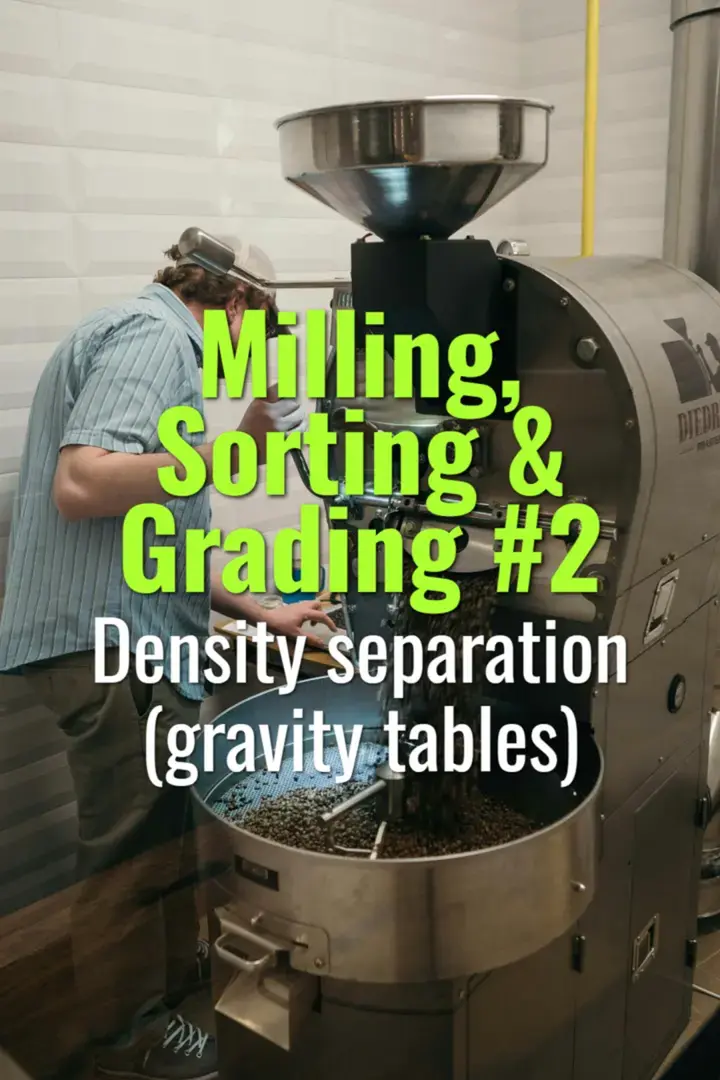Density separation (gravity tables)
This topic explains how density separation using gravity tables is applied in coffee milling, why it matters for quality, and how it improves uniformity and market value.
- Coffee Basics Nerds
- 2 min read
Article 2 of 12 in Milling, Sorting & Grading/

What is Density Separation?
- Coffee beans vary in density due to differences in ripeness, defects, or processing.
- Gravity tables separate beans by weight and density using vibration and airflow.
- High-density beans are generally higher quality, while low-density beans often contain defects.
How Gravity Tables Work
- Beans fed onto an inclined vibrating deck.
- Airflow pushes beans upward while vibration moves them across the surface.
- Heavier, denser beans sink to the bottom and move to one side.
- Lighter beans and defects float to the top and move to the opposite side.
Categories Produced
- High-density fraction: Specialty-grade, uniform moisture and maturity.
- Medium-density fraction: Acceptable commercial quality.
- Low-density fraction: Often defects (insect damage, immaturity, broken beans).
Quality Impacts
- Improves cup consistency by removing low-density, defective beans.
- Ensures even roasting since density correlates with heat absorption.
- Enhances sweetness, body, and clarity in the final cup.
Benefits of Gravity Separation
- Increases lot uniformity.
- Reduces defect count, improving grading and cupping scores.
- Provides an objective, mechanical step to complement hand-sorting.
Challenges
- Requires investment in equipment and training.
- Proper calibration needed to avoid excessive rejection of usable beans.
- Energy and maintenance costs.
Best Practices
- Calibrate machines for each lot based on bean size and moisture.
- Pair with screen size sorting for greater precision.
- Document density fractions for traceability and quality assurance.
Lasting Importance
Density separation with gravity tables is a cornerstone of coffee quality control. By ensuring only dense, uniform beans reach the specialty market, producers strengthen buyer trust and maximize value while reducing defects that could compromise the cup.
You might also like:
- Tags:
- Lasting Importance
- Best Practices
- Coffee Quality
- Quality Control
- Coffee Beans
- Cupping Scores
- Specialty Grade
- Sweetness Body
- Screen Size
- Challenges Requires
- Body Clarity
- Quality Assurance
- Quality Impacts
- Bean Size
- Avoid Excessive
- Denser Beans
- Low Density
- High Density
- Defective Beans
- Buyer Trust
- Enhances Sweetness
- Hand Sorting
- Specialty Market
- Final Cup
- Density Separation
- Higher Quality
- Insect Damage
- Broken Beans